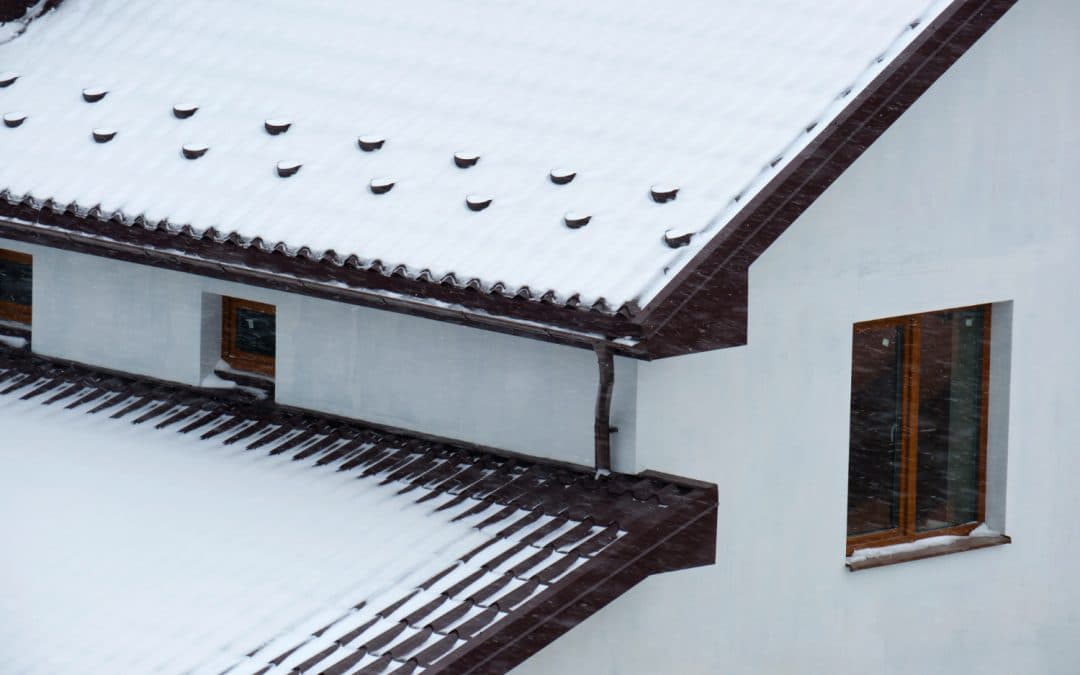Winter can be harsh on commercial buildings, especially their roofs. PVC roofing, known for its durability and flexibility, still faces unique challenges during winter. Cold temperatures, snow, and ice can test the strength and efficiency of your roofing system.
Taking proactive measures now can save time and money in the long run. In the upcoming sections, we will cover key winter challenges, valuable inspection tips, recommended materials, and long-term preventive measures to keep your PVC roof in top shape.
Key Winter Challenges for PVC Roofing
Winter brings a set of unique challenges for PVC roofing. One major issue is snow accumulation. When snow builds up on the roof, it adds much weight. This extra weight can stress the roof’s structure, potentially causing it to sag or even collapse in extreme cases.
Ice buildup is another significant concern. Ice can form at the roof’s edges, creating ice dams. These dams block proper drainage, causing water to back up and seep under the roofing material. This can lead to leaks and water damage, putting the internal structure at risk.
The freeze-thaw cycle also poses a problem. During the day, snow and ice can melt, but when temperatures drop again at night, the water refreezes. This constant cycle of freezing and thawing causes the roofing material to expand and contract, leading to cracks and weakening of the roof over time.
Understanding these challenges is the first step in ensuring your PVC roof remains strong and effective during winter.
Pre-Winter Inspection and Maintenance Tips
Preparing your roof for winter starts with a thorough pre-winter inspection. Follow these essential tips to ensure your PVC roof is ready for the cold months:
1. Visual Inspection: Check for visible signs of damage, such as tears, punctures, or loose seams. Make sure the roof surface is smooth and intact.
2. Check for Debris: Remove leaves, branches, and other debris from the roof. Blockages can prevent proper drainage, leading to standing water and ice dams.
3. Inspect Flashing and Seals: Examine the flashing around vents, chimneys, and other roof penetrations. Damaged flashing and seals can be weak points where leaks can develop.
4. Test Drainage Systems: Ensure all drains, scuppers, and gutters are clear and functioning correctly. Good drainage helps prevent water buildup and ice formation.
5. Check Insulation: Look at the insulation in your attic or under the roof deck. Proper insulation reduces heat loss, which helps prevent ice dams from forming.
6. Hire a Professional: Consider hiring a roofing expert for a more detailed inspection. Professionals can identify and address potential problems you might miss.
Taking these steps before winter sets in helps prevent damage and ensures your roof is in top condition to handle winter weather. Regular maintenance and early action are vital in preserving the integrity of your PVC roofing system.
Best Materials and Techniques for Reinforcing PVC Roofing
Reinforcing your PVC roof before winter hits can significantly improve its performance. Using suitable materials and techniques ensures your roof stays strong and intact even under harsh conditions. Here are some essential methods and materials to consider:
1. PVC Membranes: High-quality PVC membranes offer enhanced durability and flexibility. Using thicker membranes can provide additional protection against the elements.
2. Seam Reinforcements: Reinforce seams with additional layers of PVC material or specialized seam tapes. This added reinforcement helps prevent water from seeping through weak points.
3. Roof Coatings: Apply a protective coating to your PVC roof. Roof coatings act as an additional barrier against moisture and UV rays, helping to extend the roof’s lifespan.
4. Snow Guards: Install snow guards to manage snow and ice accumulation. These devices hold back snow, allowing it to melt gradually rather than sliding off in large chunks, which can damage the roof and pose safety risks.
5. Heat Cables: Install heat cables along the edges and valleys of your roof. These cables help melt snow and ice, preventing the formation of ice dams and ensuring smooth drainage.
6. Regular Maintenance: Consistent maintenance is also a part of reinforcement. Ensure regular inspections and address minor issues promptly to keep your roof in optimal condition.
Choosing the suitable materials and techniques will reinforce your roof and give you peace of mind during the harsh winter months.
Long-Term Preventive Measures for Winter Resilience
Establishing long-term preventive measures is critical to ensuring your PVC roof remains resilient through many winters. Regular and proactive care can prevent costly repairs and extend the life of your roof.
1. Scheduled Inspections: Inspect at least twice yearly—once before winter and once after. Regular checks help catch potential problems early and keep your roof healthy.
2. Routine Cleaning: Clean your roof by removing dirt, debris, and organic matter. This prevents blockages in drainage systems and reduces wear and tear on the roofing material.
3. Proper Insulation: Enhance your building’s insulation. Good insulation reduces heat loss, which helps prevent ice dams and maintains a consistent temperature for your roof.
4. Ventilation Improvements: Ensure proper ventilation in your attic or directly beneath the roof deck. Adequate ventilation helps regulate temperature and moisture levels, reducing the risk of condensation and damage to ice formation.
5. Regular Repairs: Address minor damages quickly. Small issues can grow into significant problems if left unattended. Regular maintenance checks and immediate repairs will save you time and money in the long run.
6. Professional Consultations: Engage roofing professionals for thorough assessments and maintenance. Experts can provide valuable insights and recommendations tailored to your specific roofing needs.
These preventive measures will help keep your PVC roof solid and reliable, safeguarding your commercial property during winter.
Conclusion
Preparing your PVC roof for winter involves understanding its specific challenges, conducting thorough inspections, using high-quality materials, and adopting long-term preventive measures. These steps reinforce your roofing system and ensure it remains resilient against the harsh winter conditions, protecting your commercial property.
For expert guidance and professional PVC roofing services, reach out to Mike Huddleston Roofing Systems. Our experienced team is ready to help you fortify your roof for winter resilience. Call us today to ensure your PVC roof is prepared for whatever winter throws its way.

